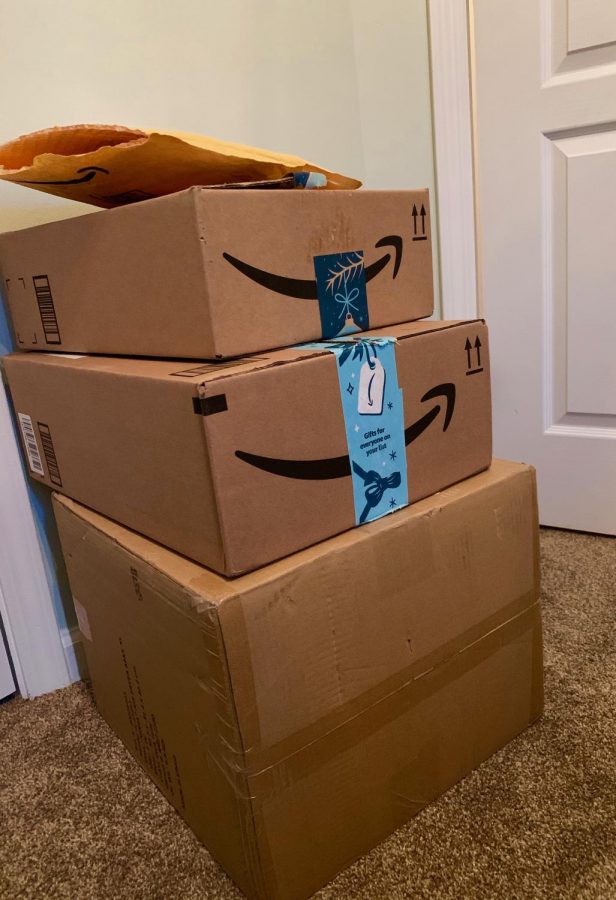Are consumers ditching physical retailers for good?
Amazon boxes stack up in place of what used to be shopping bags from retail stores.
December 18, 2019
Retail corporations and employees worldwide are facing a growing catastrophe as online shopping becomes the consumer favorite. Advancing technology has made online shopping convenient, as customers can make quick purchases from their phones and computers.
“It’s all about the competition of each company,” said sophomore, Allia Heikal.
According to Business Insider, there have been a total of 9,100 permanent store closings since the beginning of 2019. As companies continue to downsize their physical presence and switch focus towards e-commerce, the UBS predicts that a total of 75,000 clothing, electronics and furniture stores will permanently close their doors by 2026.
With the rise of online shopping, the 15.8 million people employed in the retail industry face potential unemployment. This begs the question- will companies be able to successfully switch to strictly online business?
“It depends on what you mean by success,” said English teacher, Emmanuel Lipscomb. “From the business perspective absolutely. From the perspective of the worker, not at all. Those jobs are gone and they need to find some other industry to work in.”
Amazon is the largest online retailer, with a net sales revenue of $232.89 billion in 2018. Because of their massive presence, Amazon often receives blame for the recurring crisis that physical retailers are facing.
“The purpose is that you’re supposed to be shopping from the comfort of your home,” said sophomore, Dahna Buheis.
However, online shopping isn’t the only reason for the retail crisis. According to The Atlantic, American spending on material luxuries has decreased by 20% while spending on experiences like dining and travel has increased. This shift has taken place for a variety of reasons ranging from environmental concerns and social media to a general shift in American values.
“People are looking to show that they’re having experiences,” Heikal said.
Though advancing technology has its setbacks for retailers, companies willing to adapt have been given the opportunity to creatively improve their customer experience. Some have downsized and made the switch to online only, while others have explored showrooms. In 2015, Target and Sears opened showrooms where customers could come in to test a variety of home devices before buying.
“If we’re going against technology, I think it’s best to have those showrooms, so people are able to actually see what they’re going to buy,” said Apparel Development teacher, Brooke Carter.

Amazon deliveries are ubiquitous during the holiday season.
The men’s clothing brand Bonobos opened a collection of showrooms called “Guideshops” in 2015, expanding from its previous online-only sales. These showrooms carry limited stock where customers book 30-60 minute appointments with employees called guides. The guides help customers pick and try on numerous outfits before placing orders that can be shipped directly to the buyer.
Regardless if you love or hate shopping from your phone or computer, there’s no doubt that the retail industry is undergoing a transformation as consumers become more comfortable and dependent on online business.
“If [online shopping] were to go away today a lot of us would have a hard time adjusting back to the old way of shopping,” said Lipscomb.












